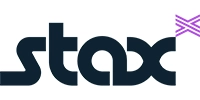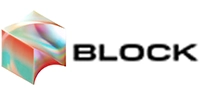It is estimated that by 2024, 80% of transactions will be electronic. While it’s always important to consider a credit card processor’s pricing structure, securing the lowest possible rate isn’t the only factor to consider when looking for value from your merchant services provider.
In the past few years, we’ve seen an unprecedented adoption of digital payments across every industry and business vertical. This has caused business leaders to look at payment processing and payment gateway software in a more strategic way, focusing on three major goals:
- Elevating the customer experience
- Driving business growth
- Optimizing payments to increase cash flow
Two of the best options on the market are Stax and Block (formerly FattMerchant and Square). When it comes to comparing Stax vs Block, there is a lot to consider. In this article, we’ll look closely at both brands, their pricing, top features, and scenarios in which each can work best for your business.
What’s the Difference Between Stax and Block?
Stax vs Square’s Block offer comparable features, it just depends on the amount of business you are doing. Both brands have favorable feedback on review sites, and the pricing is competitive depending on volume. Due to its pricing structure (per transaction), Block works better for SMBs with a lower volume of payments. Stax is beneficial for companies with a large volume of transactions or small companies looking to grow quickly.
 |  |  | |
|---|---|---|---|
| *Limited functionality | |||
Cost | $.08 per swipe or chip and $.15 cents per keyed transaction. $99/month (cheapest plan). | 2.6% + $0.10 per transaction for swipe or chip and 3.50% + $0.15 per transaction. $0/month. | 6 international payment methods – cost varies. |
Speed | 1-3 days for card payments and 4-5 for ACH. | 0-1 day (next business day). | 0-2 days.
|
Mobile App | Yes | Yes | Yes |
Currencies | Not listed. | 130 | 126 |
Debit Card
| No | Square Card | No |
Security | PCI Level 1 processor with third-party dashboard for help with PCI compliance. | No PCI compliance requirement or fees. Block is the Merchant on Record for payments. | All data collected and transmitted securely over HTTPS and personally identifiable data is encrypted using AES. |
Taxes | Custom sales tax through Stax Pay. | Track taxable and non-taxable sales through online Square dashboard. | Built-in tax and VAT compliance.
|
Mass Payments
| Automate settlement and funding of transactions at scale. | You can only schedule multiple payments using split tender.
| Global mass payables automation solution.
|
Customer Service
| Live chat, phone, email, ticket, and knowledgebase.
| Ticket, email, phone, live chat, and knowledgebase.
| Phone, email, ticket, live chat, and knowledgebase.
|
What is Stax?
Stax is a simple payment processor that helps a business save money and get paid quickly. The all-in-one platform offers a subscription-based service that eliminates the need to work with multiple vendors. The platform delivers markup payment processing services and empowers brands to move faster, work smarter, and increase profits.
Stax (formerly Fattmerchant) promises SMBs can save up to 40% on credit card processing fees. It enables business owners of any size to accept all types of payments in any way needed, whether that is in-person, keyed, mobile, swipe, contactless, and more.
Who Uses Stax?
Stax is a great option for high-volume SMBs like salons, restaurants, e-commerce stores, healthcare, law firms, retail, and more. That’s because their monthly payment plans range from $99-$199. It’s an all-in-one pricing model that companies can customize to fit their growing needs.
Brief History of Stax
Stax by Fattmerchant was founded in 2014 and is based in Florida. It’s considered one of Orlando’s fastest-growing payment technology companies and boasts a culture built on teamwork. The brand provides credit card processing services for companies of any size (including online stores) and is focused on creating the best experiences and outcomes for customers.
The business has currently processed more than $23 billion in payments, has 20,000+ customers, and offers a 98% rate of customer satisfaction.
What Top Features Does Stax Offer a Business?
Stax features a variety of hardware and point-of-sale (POS) choices, so it makes sense it’s one of the top Stripe competitors on the market. The brand offers numerous free integrations and add-ons like sales tracking, digital invoicing, and in-depth reporting.
Some of the top features the service provider offers are:
- Free terminal and mobile reader with any subscription
- Accounting Reconciliation Lite Sync (includes QuickBooks Online)
- Key API integration with surcharging capabilities
- Recurring invoices, scheduled payments, and custom branding
- Same-day funding, including holidays and weekends
In addition to free equipment, Stax offers a variety of compatible terminals that integrate seamlessly with their API. For an extra fee, you can opt for Terminal Protection which allows for unlimited swaps for faulty equipment, accidents, and general wear and tear.
Stax is also ideal for online shops and e-commerce companies. Instantly set up and connect your store with the one-click shopping cart feature. This also allows you to sell digital gift cards for an extra boost in sales.
Making a Transfer with Stax
Stax offers a smarter and more transparent way to process payments. However, the basic system is designed to mostly accept payments. To make a transfer using Stax, you can enable payment processing using Javascript, Python, and more through the Stax RESTful API.
Another way to make a transfer is through the suite of mobile SDKs (software development kits) the brand offers on its site. It’s a great way to integrate your platform and take full advantage of supplier management opportunities.
Is Stax Safe?
Stax offers Level 2 payment processing and comes with a standard number of security protections. This includes:
- PCI compliance
- SSL
- Chargeback fee protection
The system is about even with competitors when it comes to security. However, it differentiates with the ability to offer lower interchange rates by automatically qualifying “card-not-present” payments for Level 2 processing. Most brands require card-present transactions when applying this level of security.
Stax Fees
Stax offers simple pricing plans with no contracts or hidden fees. The flat subscription model works great for high-volume payments because it’s a fixed fee.
Every subscription includes a 0% markup on direct-cost interchange, 24/7 support, an online knowledgebase, and the first $500,000 in annual processing.
Growth – $99/month
This is the basic package and comes with digital invoicing (including recurring and scheduled). You also receive a free terminal or mobile reader. Other features are:
- ACH Processing
- Surcharging capabilities
- Custom dashboard with analytics
- Quick payment /backup processing
Pro – $159/month
This is the next plan up and includes everything in the Growth package, plus:
- Payment links
- Text2Pay mobile payments
- API key integration capabilities
- Accounting Reconciliation Lite Sync (includes QuickBooks Online)
- Securely store customer cards on file
Ultimate – $199/month
The Ultimate plan includes everything in the Growth and Pro plans, plus:
- Automatic updates for stored credit cards
- One-click shopping cart setup with catalog management
- Advanced dashboard and reporting
- Data exports (i.e. by customer, transaction, etc.)
If your business needs to process more than $500,000 annually, then you should call Stax for a custom quote.
Transform the way
your finance team works.
Bring scale and efficiency to your business with fully-automated, end-to-end payables.
What is Block (formerly Square)?
Block is a financial services and mobile payment solution that sells a broad range of products, including inventory management, payment processing, business capital, and point of sale equipment. The payments platform is aimed at SMBs and allows them to accept credit card payments through a smartphone or tablet using a mobile card reader (which is free).
People often compare Square vs PayPal, as two of the best online payment platforms in the market. The only thing that has changed for Square, is the name. Currently, companies in 8 different countries can use Square’s technology, and the POS system accepts 130 international currencies.
The program shines as a B2B payment processor, and acts as a SaaS with customizable invoice and e-commerce templates. The initial setup includes software that can be downloaded on an Apple iPad, iPhone, or Android device, and free hardware (Square Reader).
Who Uses Block?
Block (formerly Square) is an efficient tool for smaller companies that handle a low volume of transactions every month. It has no monthly fee or flat rates for credit cards processed, making it a more affordable option for SMBs. If you are a large, high-volume business, it’s recommended you consider a dedicated merchant account along with your Square membership.
The Block platform is also beneficial for companies doing small dollar transactions. That’s because of the low fee of 2.6% + $0.10 per transaction. For example, a $10 transaction would only cost you 36 cents, whereas a $1,000 transaction will run you high fees of $26.10.
A mobile business also benefits from a solution like Square. They need an easy payment processor that can be used anywhere. The Square card reader can be plugged into any mobile device.
Brief History of Block
Technically it’s still Stax vs Square; Square is still the name of the payments portion of Block, the corporate name simply changed. Square was founded in 2009 and is based in San Francisco. The company changed their name to Block in December, 2022 to better reflect their focus on cryptocurrency and other business lines.
Block also owns some popular apps you may have heard of, like Cash App (mobile payment app), Weebly (web hosting service), Tidal (music streaming brand), and Afterpay (buy-now-pay-later service). The Cash App product generated the most revenue in Q4 FY 2021.
The Block payment and POS app has now been downloaded more than 33 million times and features over 2 million active users.
What Top Features Does Block Offer a Business?
Not much has changed since Block took over the namesake of Square. The brand offers dedicated versions of the Square app for specific industries, like Square for Retail, Square for Restaurants, etc. The service is fast and free for next-business-day transactions, and comes with free credit card processing hardware. This is particularly beneficial for small business owners seeking a platform with minimal upfront costs.
Other important features include:
- Pos hardware options like Square Stand, Square Terminal, and Square Register
- Check in-depth sales analytics from anytime, anywhere
- No hidden fees and no long-term commitments
- Simple app integrations for invoicing, employee management, social media, and more…
- Easier inventory management functionality with real-time analytics
Square also enables a business to build a custom, point of sale system. You just need to ask for a quote.
Making a Transfer with Block
Square enables a business to decide when and where to receive payments and transfers. They offer a few different options:
- Standard transfer schedule
- Customer transfer schedule (tailored to your business hours)
- Transferring funds to your Square card
The system doesn’t have transfer limits with the standard or custom schedules. They will never hold funds based on the frequency, amount, or type of transactions.
In order to manually transfer your balance, follow these steps:
- Open the Square platform and navigate to “Balance”
- Tap “Transfer to Bank”
- Choose transfer speed (next business day or instant transfer)
- Confirm your transfer
Is Block Safe?
When using the Square payments system, your transactions are encrypted to protect from hackers. Security is engineered into the hardware. Everything is designed and maintained within the Block environment, so you don’t have to go through anyone else. Payments are secure, out of the box, with no lengthy setup and all card-present payments are protected with end-to-end encryption as well.
Block Fees
In order to appeal to small businesses, Block has always offered low processing fees with a multitude of payment options. They charge the following fees:
- 2.6% + 10¢ for contactless, swipe, chip cards, and magstripe cards
- 3.5% + 15¢ fee for manual key-in, processing card on file, or manual through Virtual Terminal
POS Retail Systems: Stax vs Block
When it comes to point of sale hardware, both the Stax and Block systems include a credit card reader with their subscriptions. All Stax Pay accounts come with a free, cloud-based terminal or Bluetooth mobile reader. The apps for both run on iOS or Android devices and can be used to process payments in-person, online , or over the phone.
Square sells a full range of branded hardware, including:
- Terminal stands
- Complete POS terminals for retailers or restaurants
- Tablet-based cash registers
Stax offers the following hardware options:
- NPC mobile readers
- Terminals made by Dejavoo and PAX
- SwipeSimple’s mobile chip reader
- Stax Bluetooth mobile reader
The mobile readers will take payments from a swipe or dip on credit cards. The terminal accepts Apple Pay and Google Pay, as well as a swipe, dip, or tap from a credit card.
Stax vs Block: Which is Better for Business?
- Costs: Tie
- Ease of Use: Block
- Speed: Block
- Security: Stax
- Support: Stax
Who Will Save You More Money?
Winner: Tie
This is a tie because the systems appeal to two separate audiences. Since Stax uses a flat, monthly subscription pricing model, it works best for companies that are pulling in a certain amount of money every year. This amount averages about $5,000/month. If this is your company, then Stax is a great fit.
However, if your business has a low volume of transactions, that are not very big, you may not mind paying the per-transaction rate that Block has to offer. The plans are a more economical (starting at free) solution to Stax’s monthly plans.
When it comes to how you process payments, Stax has lower pricing for in-person or card-present payments. Not only is there no markup on interchange fees, but the transaction fee for CNP transactions is 50% of what Block charges. On the other hand, Block takes the lead when it comes to credit and debit card payments on POS equipment.
Stax has a different payment structure for keyed and swipe/chip transactions, since they charge a higher monthly rate. However, if you’re spending more than $100 per month on credit card transaction fees, it might still be worth it.
Which System is Easier to Use?
Winner: Block
When it comes to software integration, you’ll have more options with Square. Additionally, sign up is a much simpler process. To get started, you just have the create an account and verify your identity. In comparison, the onboarding for Stax is slightly more complex. There is an underwriting process that involves asking for data like:
- Average yearly revenue
- Average transaction size
- Estimated percentage of the types of transactions
Who is Faster?
Winner: Block
Since there is a lot more red tape involved with Stax, the payments may take a little longer. Square deals with SMBs and thus, payments are a bit faster. Here are the average timeframes:
- Stax – 1-3 days for card payments and 4-5 days for ACH
- Block – 0-1 day (next business day)
Which is More Secure?
Winner: Stax
Stax helps a business achieve PCI compliance through a third-party dashboard which guides you through a questionnaire. Some merchants can also call a dedicated helpline for support with PCI compliance. As a PCI Level 1 processor, Stax goes through rigorous audits and network penetration testing to keep data secure.
Although Square will handle your PCI compliance, they have had several data breaches over the years, with Cash App being a hacker’s favorite.
Who Has Better Customer Service?
Winner: Stax
Stax and Block offer a similar level of support, including:
- Live chat
- Chatbots
- Phone
- Ticket
- Comprehensive knowledge base
However, customer service at Stax is more customized than Block because it has a smaller customer base (approximately 12,000). They speak to each client over the phone during sign up. They also boast in-house customer support which makes them better equipped should you run into technical issues.
Stax does not publish hours for customer support. Square offers support Monday to Friday, 6 a.m. – 6 p.m. PST.
Summing It Up
In 2020, the global transaction value of digital payments was $5.2 trillion. Consumers have forever changed how they do business, and expectations are at an all-time high. People will anticipate a lot of payment options and convenient, mobile-friendly ways to pay.
Let’s be honest…both of these systems are stellar, it simply depends on a few factors like:
- The volume of payments you have each month
- The dollar amount of transactions being made
- Plans for growth
Once you have determined the type of business you are running, it will be easier to find a payments system that’s a perfect fit.

